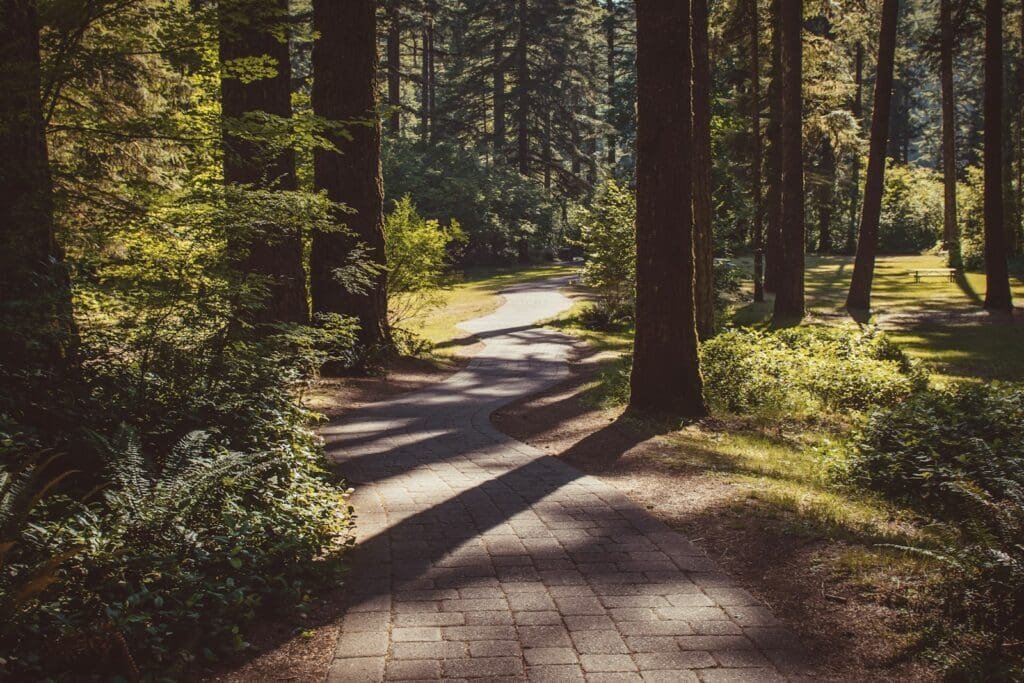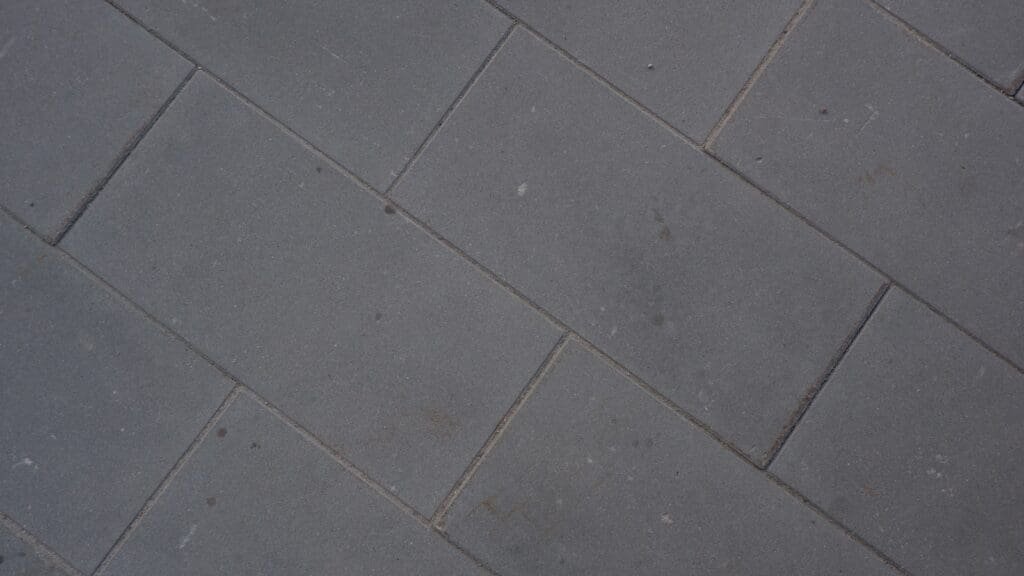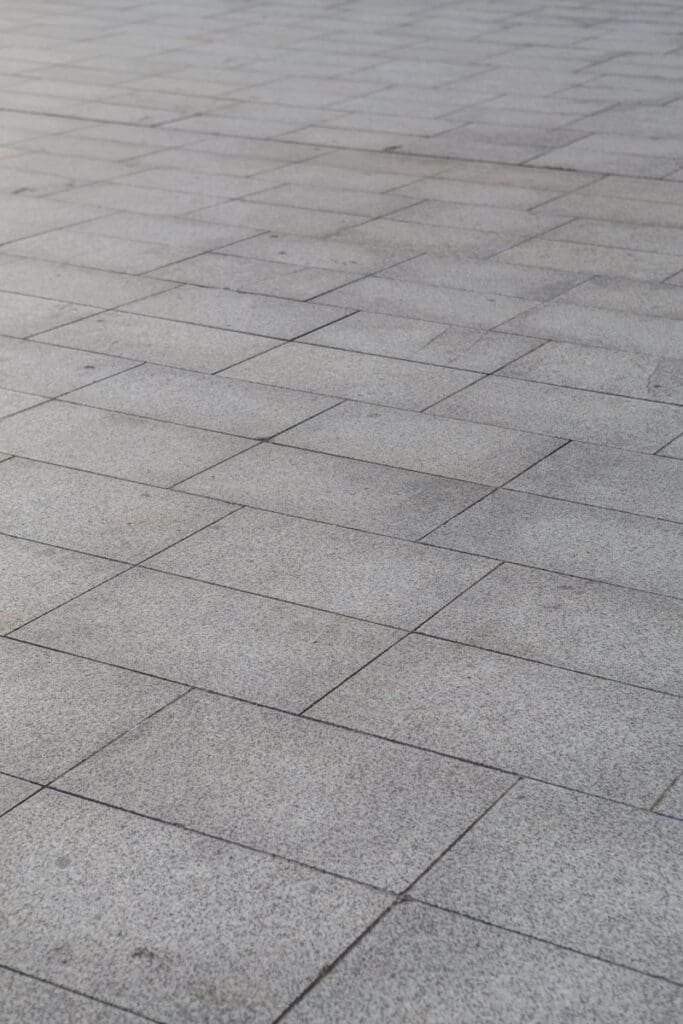Kick-start Your Outdoor Renovation Project: Interlock vs Pavers
Ever wondered about the difference between interlocking pavers and regular pavers for constructing patios or walkways?
You’re not alone!
In this article, we’ll unravel the similarities, differences, and suitable applications for each of these popular paving solutions.
We’ll outline the fundamental differences between these options and explain the variety of materials used. We’ll also expand on the pros and cons of interlocking vs regular pavers, exploring cost considerations, potential issues with weeds, and aesthetics.
By the end, you’ll have a sound understanding of these two outdoor construction elements and be well-equipped to make an informed decision for your renovation project.
“The right choice isn’t always the easiest one” – but with the right information, we’re sure that you can make the best decision for your needs and budget.
Table of Contents
Understanding the Difference Between Interlock and Pavers

What Are Interlock and Pavers?
Interlock
Interlocking refers to a method where blocks or stones are placed together in a way that they connect firmly without the use of mortar. These blocks have ridges on their sides that interlock with each other, creating a stable surface.
Pavers
Pavers are bricks or stones used to create driveways, walkways, patios, and other surfaces. They can come in various shapes, sizes, and materials such as concrete, brick, or stone. They are set on prepared ground and held in place by sand or other materials.
Key Differences
- Installation Method: Interlocking blocks fit together without mortar, while pavers typically do not interlock unless designed to do so.
- Design Versatility: Pavers offer a wider variety of shapes and sizes compared to the generally uniform shape of interlocking blocks.
- Stability: Interlocking designs provide better stability due to their connected nature.
- Durability: Both can be highly durable, but interlocking blocks tend to be more resilient to shifting over time.
Materials Used
| Interlock | Pavers |
|---|---|
| Primarily concrete | Concrete, brick, natural stone |
| Ridges on sides for interlocking | Smooth or textured surfaces |
Practical Applications
Where to Use Interlock
- Driveways
- Sidewalks
- Patios
Where to Use Pavers
- Garden paths
- Pool decks
- Courtyards
Maintenance Considerations
- Interlock: Easy to clean, and damaged blocks can be replaced individually without disturbing the entire structure.
- Pavers: Requires regular sealing to prevent stains, and replacing damaged pavers can be more challenging depending on the material used.
For more details on choosing between interlock and pavers, you can visit this HGTV guide on pavers and interlocking concrete.
What are the Disadvantages of Interlocking Concrete Block Pavement?
Cost Considerations
While interlocking concrete block pavements can offer excellent durability and stability, the initial cost can be significantly higher compared to other paving options, such as asphalt or poured concrete. This includes both material and labor costs, making it essential to consider your budget before opting for this solution.
Complex Installation
The process of installing interlocking concrete blocks is labor-intensive and requires meticulous preparation. The base must be perfectly leveled and well-compacted to ensure that the blocks interlock correctly and stay in place. Any misalignment can lead to uneven surfaces, reducing pavement longevity and comfort.
Potential for Weeds and Ants
Interlocking concrete blocks are usually set on a sand base, with sand also used to fill the joints. Over time, these joints can become a breeding ground for weeds and ants, requiring regular maintenance to keep the pavement looking pristine. Although polymeric sand can reduce this risk, it is not a complete safeguard.
Susceptibility to Shifting and Settling
Despite the stability offered by the interlocking design, the pavement is not entirely immune to shifting and settling. Natural ground movements, heavy loads, and water erosion can cause the blocks to move slightly, creating gaps and uneven surfaces that may need to be adjusted periodically.
Limited Design Aesthetics
Although available in various sizes and colors, the design options for interlocking concrete blocks are somewhat limited compared to other types of pavers like natural stone or brick. The uniformity of interlocking blocks may not suit the tastes of homeowners looking for a more unique or varied aesthetic.
Color Fading
Exposure to sunlight and weather conditions can cause the color of interlocking concrete blocks to fade over time. This can affect the overall look of your pavement. While sealants can offer some protection, they need to be reapplied periodically, adding to the maintenance workload.
Drainage Issues
Improper installation can lead to poor drainage, causing water to pool on the surface or beneath the pavement. This can not only damage the pavement itself but also contribute to soil erosion and other related problems. Ensuring proper drainage requires additional planning and expertise, which can increase both time and costs.
No Flexibility for Future Changes
Once installed, making modifications or repairs to interlocking concrete block pavements can be challenging. Unlike poured concrete, which can be removed and repoured, changes to interlocking blocks require the removal and replacement of individual blocks, which can be a time-consuming task.
For more insights on the pros and cons of different paving options, you might find value in checking out this BHG guide on paver types.
Cost Comparison: Interlock vs. Concrete

Material Costs
Interlocking pavers and just pouring some concrete differ significantly in terms of material costs. Interlocking pavers are typically made from concrete but may also include natural stone or brick, which can drive up the price.
| Material | Cost Per Square Foot |
|---|---|
| Interlock (Concrete) | $6 – $15 |
| Poured Concrete | $4 – $8 |
| Interlock (Natural Stone) | $10 – $30 |
Labor Costs
Labor costs for interlocking pavers are generally higher due to the meticulous installation process. Proper installation requires careful base preparation, leveling, and fitting the blocks together to ensure stability.
- Interlocking Pavers: Labor-intensive, requiring skilled workers to ensure proper alignment and placement of each block.
- Concrete: Typically faster to pour and level, leading to lower labor costs.
Maintenance Costs
Long-term maintenance costs can also differ between interlock and concrete.
- Interlocking Pavers: Individual blocks can be replaced, potentially reducing repair costs. However, periodic resealing and joint sand replacement are required.
- Concrete: Cracks in poured concrete can be difficult and expensive to repair, often requiring large sections to be re-poured.
Resale Value
While initial costs may be higher for interlock, the resale value of your property can benefit from its installation.
- Interlocking Pavers: Often viewed as a premium option which can enhance curb appeal and potentially increase property value.
- Concrete: More functional, but generally does not add as much aesthetic value as interlocking pavers.
Environmental Impact
Both options have environmental considerations that can impact their overall cost-effectiveness.
- Interlocking Pavers: Can be more environmentally friendly if made from reclaimed materials, and allow for better water drainage, reducing the risk of flooding and soil erosion.
- Concrete: Production has a higher carbon footprint due to the cement manufacturing process. However, new formulations with reduced emissions are becoming more common.
For further guidance on weighing the costs and benefits of different paving options, consider this Gardenista article on paving alternatives.
Are Interlocking Pavers Expensive?

Initial Costs
Just as emphasized earlier, the initial costs of interlocking pavers can be higher compared to other paving options like poured concrete or asphalt. This is due to multiple factors, including the materials used and the labor required for proper installation.
Here’s a closer look at the initial costs:
- Material Costs: Depending on whether you choose concrete, natural stone, or brick interlocking pavers, prices can range from $6 to $30 per square foot.
- Labor Costs: The installation process for interlocking pavers is complex, requiring skilled labor to ensure a stable and long-lasting finish. Labor can account for a significant part of the total expense.
Long-Term Value
Interlocking pavers might have higher initial costs, but they can offer substantial long-term value:
- Durability: Interlocking pavers are designed for strength and durability, making them a long-lasting option that can withstand heavy traffic and harsh weather conditions.
- Maintenance: Though periodic maintenance is required, individual pavers can be replaced easily if damaged, unlike poured concrete which often needs repouring for extensive repairs.
- Resale Value: Interlocking pavers can boost your property’s curb appeal, potentially increasing its market value.
- Designs and Patterns: While interlocking pavers come with some design limitations compared to regular pavers, there are still numerous patterns and colors to choose from, allowing for personalized installation that can match the style of your home.
Environmental Impact
Interlocking pavers also offer some environmental and cost-saving benefits:
- Permeability: Interlocking pavers allow for better water drainage, reducing the risk of water pooling and soil erosion. This can lead to cost savings on drainage solutions and potential water damage repairs.
- Eco-Friendly Materials: Some interlocking pavers are made from reclaimed materials, which might lower costs and reduce environmental impact.
In summary, while the initial expenses for interlocking pavers are on the higher side, the long-term benefits, including durability, maintenance ease, and potential property value increase, can outweigh the upfront costs.
Conclusion: Selection Between Interlock and Pavers
In conclusion, both interlock and pavers have their unique strengths and potential drawbacks when it comes to paving projects. Interlock often comes with increased durability and stability, thanks to its design, and is relatively easy to maintain.
Pavers, on the other hand, offer significant design versatility with an array of shapes, sizes, and materials to choose from, although their maintenance can be a bit more challenging. Additionally, the initial installation cost for interlock systems tends to be higher, but their potential to increase property value can often offset these costs in the long term.
Frequently Asked Questions – FAQs
Do interlock systems require regular maintenance?
Yes, interlock systems require regular maintenance, although compared to pavers, they are easier to clean, and damaged blocks can be individually replaced.
What factors affect the installation costs of interlock and pavers?
The installation cost of both interlock and pavers can depend on several factors, including the cost of materials, labor costs, and the intricacy of the project.
Can interlock systems enhance my property’s value?
Yes, due to their aesthetic appeal and durability, interlock installations can increase the resale value of your property.
Are there any environmental benefits to using interlock systems?
Interlocking pavers can be more environmentally friendly if made from reclaimed materials. Plus, they allow for better water drainage, reducing flooding and soil erosion risks.






